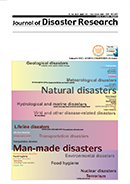Volume 18, Issue 8
Displaying 1-12 of 12 articles from this issue
- |<
- <
- 1
- >
- >|
Regular Papers
-
Article type: Paper
2023Volume 18Issue 8 Pages 825-834
Published: December 01, 2023
Released on J-STAGE: December 01, 2023
Download PDF (1168K) -
Article type: Note
2023Volume 18Issue 8 Pages 835-838
Published: December 01, 2023
Released on J-STAGE: December 01, 2023
Download PDF (516K) -
Article type: Paper
2023Volume 18Issue 8 Pages 839-851
Published: December 01, 2023
Released on J-STAGE: December 01, 2023
Download PDF (3184K) -
Article type: Paper
2023Volume 18Issue 8 Pages 852-858
Published: December 01, 2023
Released on J-STAGE: December 01, 2023
Download PDF (309K) -
Article type: Paper
2023Volume 18Issue 8 Pages 859-867
Published: December 01, 2023
Released on J-STAGE: December 01, 2023
Download PDF (2008K) -
Article type: Paper
2023Volume 18Issue 8 Pages 868-876
Published: December 01, 2023
Released on J-STAGE: December 01, 2023
Download PDF (3383K) -
Article type: Note
2023Volume 18Issue 8 Pages 877-883
Published: December 01, 2023
Released on J-STAGE: December 01, 2023
Download PDF (363K) -
Article type: Paper
2023Volume 18Issue 8 Pages 884-894
Published: December 01, 2023
Released on J-STAGE: December 01, 2023
Download PDF (3219K) -
Article type: Paper
2023Volume 18Issue 8 Pages 895-910
Published: December 01, 2023
Released on J-STAGE: December 01, 2023
Download PDF (3810K) -
Article type: Material
2023Volume 18Issue 8 Pages 911-917
Published: December 01, 2023
Released on J-STAGE: December 01, 2023
Download PDF (1856K) -
Article type: Survey Report
2023Volume 18Issue 8 Pages 918-923
Published: December 01, 2023
Released on J-STAGE: December 01, 2023
Download PDF (1367K) -
Article type: Paper
2023Volume 18Issue 8 Pages 924-931
Published: December 01, 2023
Released on J-STAGE: December 01, 2023
Download PDF (186K)
- |<
- <
- 1
- >
- >|
